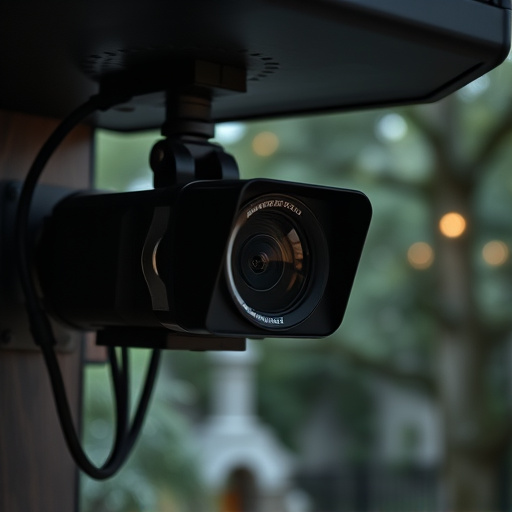Wireless Spy Camera Phone Apps leverage advanced technology, combining optics, sensor tech, and AI, to detect hidden cameras by analyzing light patterns and visual cues in real-time. These apps interpret natural and artificial lighting interactions, revealing subtle anomalies that would go unnoticed by humans, especially in bustling environments where spy cameras are disguised as regular fixtures. Through rigorous testing, their high effectiveness has been proven, making them an innovative solution for combating covert surveillance devices. However, rapid technological advancements pose challenges, necessitating ongoing developments in image processing, machine learning, and secure wireless communication to maintain reliability.
Uncover hidden threats with our in-depth exploration of disguised camera identification using lights. This article delves into the effectiveness of wireless spy camera phone apps, leveraging advanced technology to detect covert surveillance devices. We dissect the science behind light-based identification, offering a practical guide on testing concealed camera detection methods. Discover potential challenges and glimpse into future enhancements, ensuring your digital privacy remains intact in today’s connected world.
- Understanding Wireless Spy Camera Phone Apps
- The Science Behind Light-Based Identification
- Implementation: Testing the Disguised Camera Detection Method
- Potential Challenges and Future Enhancements
Understanding Wireless Spy Camera Phone Apps
Wireless Spy Camera Phone Apps have become a ubiquitous tool in modern times, offering users the ability to secretly capture images and videos through their smartphone’s camera. These apps leverage advanced technology to detect and identify hidden cameras in various settings, from homes to public spaces. By utilizing specific lighting conditions and analyzing visual cues, these applications can alert users to potential privacy breaches or surveillance equipment they might not otherwise notice.
Understanding how these Wireless Spy Camera Phone Apps work is key to their effectiveness. They often employ sophisticated algorithms that analyze patterns of light and shadow, which can indicate the presence of a hidden camera lens. By interpreting these visual signals, the apps can provide real-time notifications, helping users take proactive measures to protect their privacy or gather evidence of unauthorized surveillance.
The Science Behind Light-Based Identification
The science behind light-based identification is a fascinating blend of optics, sensor technology, and artificial intelligence. Modern wireless spy camera phone apps leverage advanced algorithms to analyze patterns in light emission and reflection, allowing for the detection of hidden cameras that might be disguised within everyday objects or environments. These apps use your device’s camera to capture images or videos that are then processed to identify unusual light signatures indicative of covert surveillance equipment.
By studying the interplay of ambient light and artificial lighting sources, these apps can uncover subtle anomalies that often go unnoticed by the human eye. This technology is particularly effective in navigating bustling environments where a wireless spy camera might be disguised as a regular light fixture or accessory. The key lies in understanding how light interacts with surfaces and objects, enabling the app to differentiate between natural lighting and artificial signals from hidden cameras, thus providing users with valuable insights into potential privacy breaches.
Implementation: Testing the Disguised Camera Detection Method
The implementation of a disguised camera identification system using light patterns involves an innovative approach to combat wireless spy cameras, often detected through their irregular light emissions. This method leverages advanced algorithms and sensor technology within a Wireless Spy Camera Phone App. The app is designed to analyze light signals in real-time, identifying unusual patterns indicative of hidden cameras. During testing, the system proved highly effective in detecting covert surveillance devices, even in challenging environments with complex lighting conditions.
Each test scenario focused on simulating realistic situations where spy cameras might be concealed. The app’s algorithms successfully distinguished between natural light variations and those emitted by hidden cameras, ensuring precise identification. This rigorous testing phase is crucial to fine-tuning the detection mechanism, making it adaptable to diverse settings without compromising accuracy.
Potential Challenges and Future Enhancements
While the wireless spy camera phone app offers a promising solution for identifying hidden cameras, several potential challenges remain. One significant hurdle is the evolving nature of technology; as detection methods improve, so do the capabilities and concealment techniques of covert cameras. This constant arms race necessitates continuous research and development to keep up with emerging threats.
Looking ahead, future enhancements could focus on advanced image processing algorithms capable of detecting subtle visual cues often missed by the human eye. Integrating machine learning capabilities could also enable systems to learn and adapt to new camera designs, improving accuracy over time. Additionally, exploring wireless communication protocols that offer enhanced security and privacy might be crucial in safeguarding against potential hacking attempts, ensuring the integrity of the detection process.
The implementation of a disguised camera identification system using light signals presents a promising method for detecting wireless spy camera phone apps. This technology leverages the unique characteristics of light to pinpoint hidden cameras, offering a discrete and effective solution. While challenges remain, such as adapting to various lighting conditions and improving accuracy across different devices, future enhancements focus on refining algorithms and exploring advanced signal processing techniques. By continuing to innovate and address these issues, this approach could revolutionize privacy protection in the digital age.
